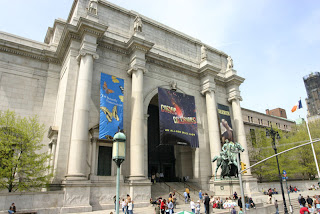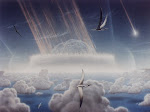
On Monday, October 26, my class and I went to the American Museum of Natural History. We went to four main points in the museum based on astronomy. The first place we went to in the museum was to the Hall of Meteors and Meteorites . The Hall ofMeteors and Meteorites was all about how meteors and meteorites were created and discovered. Most of the meteors and meteorites we saw which included; The Woman, The Dog and Ahnighito, were all from West Greenland all mainly found in 1894 or 1895. The second place we went was The Rose Center which contained a lot of information on the planets and the rest of the solar system. Then we saw a movie called The Big Bang. Immediately following we went through a sort of maze of the 13 billon years that followed the Big Bang. Afterward we went to a much longer movie called Journey To The Stars, which was about how stars, the Earth and Sun were all made. It was very interesting because it was in a dome shaped theater above you and it looked like it was right there happening in front of you. The first thing I learned was that meteorites and meteors are significantly different. The second think I learned is what kind of effect the Big Bang had over the solar system and our own home planet. The last thing was I learned what shooting stars actually are.
Being the depth of thought thinker I am, I still have 2 more significant questions:
1. How was the Hermes Asteroid created?
2. How did it get to where it is right now?


